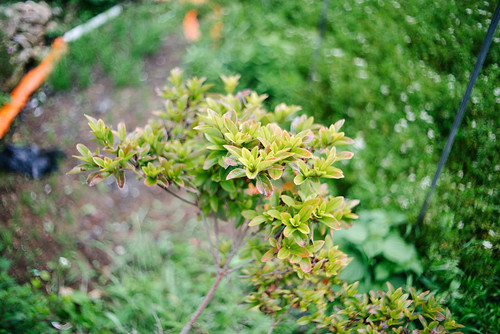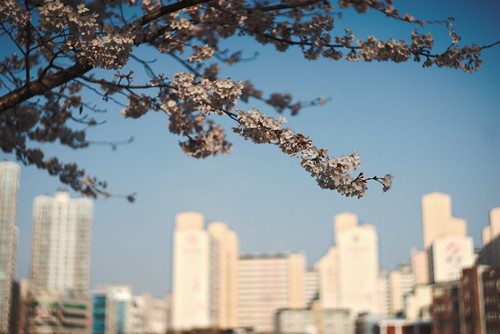Pentacon 29mm f/2.8 MC lens technical details:
type: Prime lens
mount type: M42
optical design: 7 elements in 7 groups
aperture range: f/2.8~f/22
aperture blade: 6
minimum focus: 25 cm
filter thread size: 55mm
weight: 210g
length: 53mm
I don't much care about this technical details of lens. But sometimes it can be useful.
For example, if I already have same uv filter or hood like this lens, I can use with this lens.
And I'm walking long hours when I do photo-walks. So if lens wasn't heavy, it was very suitable for me. That is the reason that I mostly shoot with prime lens.
So I do check those things from the technical details.
You can read more about the lens from here:
Technical notes:
These photos were all taken with handheld and I used M42 lens to Sony E mount or Micro four thirds adapter so I have no idea about aperture number for the photo.
When I am taking photos, I do use Raw file format. So I need to convert raw file to jpg file and during that time, I do some post-processing--this is kind of darkroom process in developing film.
And when I do this, I don't use any default setting from
Rawtherapee--open source software because there has some image modification settings like sharpening, micro-contrast and among other things.
I don't use Adobe Photoshop but this also has same kind of default setting with sharpening.
This isn't important for photography. But this is about the lens--what kind of photo I can take with this lens. So sharpening won't help to know about the lens.
So when I do use Rawtherapee, I removed all the default setting.
I will do these adajustments, if necessary:
- click the auto button in exposure tab--automatically calculate the exposure value,
- adjust exposure value, if overall image was still dark or too bright,
- adjust contrast(between 3 and 18) in L*a*b* adjustments tab,
- if there have some areas were too dark or too bright which makes me feel unbalance the overall look, adjust the shadow/highlight value.
- Sometimes, white balance set to auto or slightly reduce the temperature value. Because Sony A7's white balance value was quite terrible when I do use other brand lens--not Sony E mount lens.
I have two lenses. One with red MC and red letter on the feet. The other one is with green letter on the feet.
Photos of the lens that I used - Pentacon 29mm f/2.8 MC (green letter on the feet) lens:
 |
| Pentacon 29mm f/2.8 MC lens |
 |
| Pentacon 29mm f/2.8 MC lens |
Sample photos - Sony A7 full frame camera with Pentacon 29mm f/2.8 MC lens:
 |
| Pentacon 29mm's bubbly bokeh |
* It was my flickr account photo. Same post processing and then film simulation set to Kodak Potra 160.
This is quite extreme bokeh, I think.
But you can also take photo like below--quite smooth bokeh:
 |
| I think it is morning glory or ipomoea kind of flower. |
 |
| at the Sincheongyo, Daegu |
Olympus E-P3 camera with Pentacon 29mm f/2.8 lens:
 |
| Pentacon 29mm's bubbly bokeh |
I took this photo in jpg and use auto tone in Olympus Viewer 3 software.
Photos of the lens that I used - Pentacon 29mm f/2.8 (red) MC lens:
 |
| Pentacon 29mm f/2.8 red MC version lens |
 |
| Pentacon 29mm f/2.8 red MC version lens |
Sample photos - Sony A7 full frame camera with Pentacon 29mm f/2.8 red MC lens:
 |
| at Taepyeong negeuri, Daegu |
* It was my flickr account photo. Same post processing.
 |
| Sincheondunchi, near Dongsingyo |
Sony Nex-5R camera with Pentacon 29mm f/2.8 red MC lens:
 |
| at the Sincheongyo, Daegu |
P.S. If you'd like to read in Korean, you can read it from
here--this is my Korean blog.
























